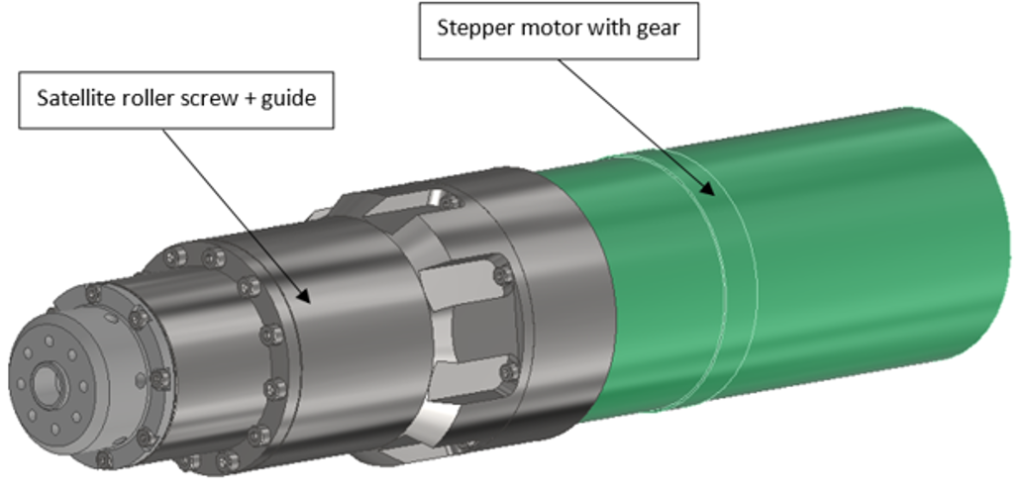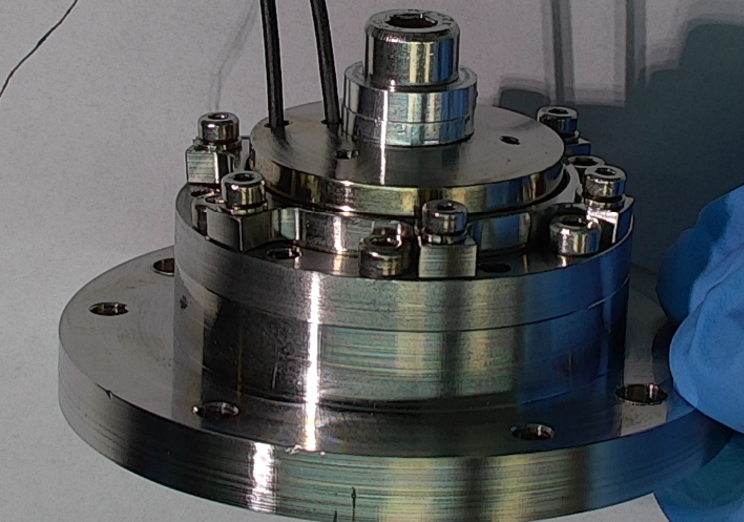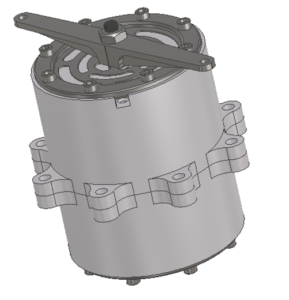
The throttleable liquid propulsion is a technology enabler for the launchers’ kick-stages, in micro-launcher upper stages, and for future exploration missions on the Moon or planets to descent the vehicle in a safe way. Launchers’ reusability may be also empowered by this technology by providing landing functions for rocket stages.
Also, in recent years, a stronger emphasis is put on friendly environmental alternatives to nitrogen-tetroxide.
To address these two important technical challenges – variable thrust control and sustainability – the TLPD project was initiated to have a new injector and control valves designed, built, and tested to investigate control possibilities of a 5kN thrust class engine that would be compatible with green propellants like hydrogen peroxide.
Activity is carried out with the leading role of the Institute of Aviation, in the frame of the ESA Future Launchers Preparatory Program.
Astronika is working on the mechanical and control electronics development of actuators providing positioning of the pintle injector and regulating valves, with the requirements of micron range accuracy, hundreds of newtons operational load supplied at high dynamicity of work.
The project aims to prove technology maturity at TRL4.
As of today, most attitude control systems utilising dual-seat thruster valves rely on supplies external to Europe. This emerged a strategic need to develop a competitive solution of a fast-acting valve with two mechanical seals compatible with propellants MON, MMH, and N2H4.
In cooperation with the Institute of Aviation, Astronika is addressing this need by developing solenoid-based actuators for 1N monopropellant and 10N bipropellant valves, aiming to reach TRL4.
Astronika capabilities that are crucial for such activity comprise FEM modelling of electromagnetic circuitry, modelling of the dynamics (electrical, mechanical) in Matlab Simulink, and its correlation with the use of breadboard test data.
All parts for the valve are in-house machined, including the manufacturing of the coil, whose filling factor – thanks to dedicated tools – may have a filling factor reaching >70%.
So far developed breadboard has proved the adequacy of the design: the actuator was able to assure both fast response times and low electrical power.


Any bipropellant propulsion system (e.g. NTO/MMH) requires the use of latch valves. As both fuel and oxidizer are always supplied synchronously, a latch valve that would provide such function in a simultaneous way would be an important asset.
And currently, there is no European solution to comply with such requirement, therefore a joint project between Institute and Aviation and Astronika was initiated, to develop and test the breadboard (up to TRL4) for European Space Agency.
Astronika contributes to this activity by designing the valve’s actuator, performing electromagnetic and dynamic analyses of the bistable solenoid system with suspension, and by building associated breadboard models.
The is a growing number of missions that require high agility in terms of attitude. CMG technology is addressing this challenge by providing much higher torque than classical solutions with reaction wheels at the same mass.
Astronika, in cooperation with Thales Alenia Space, is developing a gimbal for CMG device that is providing few Nms of torque, while keeping mass lower than ten kilograms.

